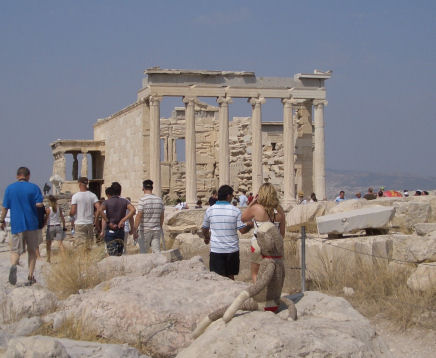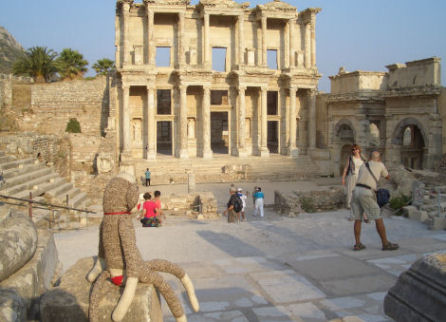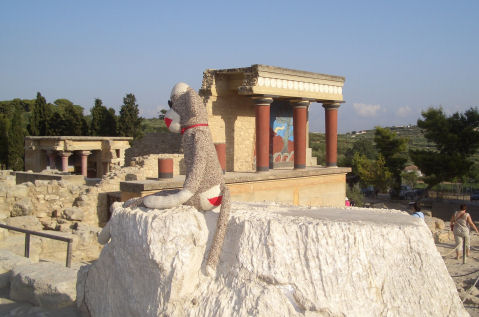
Also on the Acropolis of Athens stands the Erechtheion. There is a hole in the ceiling and floor of the northern porch of this temple where Poseidon's trident struck to make a spring gush forth during a contest with Athena to have the city named in his or her honour. Athena successfully countered with an olive tree which resides next to the temple.
The delicate carvings on this structure's walls are not to be missed!
Here I relax next to the 5th century B.C.E. Temple of Poseidon at Cape Sounion after finding the spot on one of the columns where Lord Byron carved his name.
In ancient times sailors knew they were nearing Athens when they caught sight of the temple's slender Doric columns. It was also here that King Aegeus waited for his son Theseus to return from Crete after slaying the Minotaur.


A quick jaunt to Turkey finds me in Ephesus, where I gaze at the magnificent Celsus Library. The Library was completed in 135 A.D. for Tiberius Julius Celsus Polemaeanus. It was built to store 12,000 scrolls and to serve as a monumental tomb for Celsus. I can only wonder what forgotten knowledge once graced this structure's halls.


